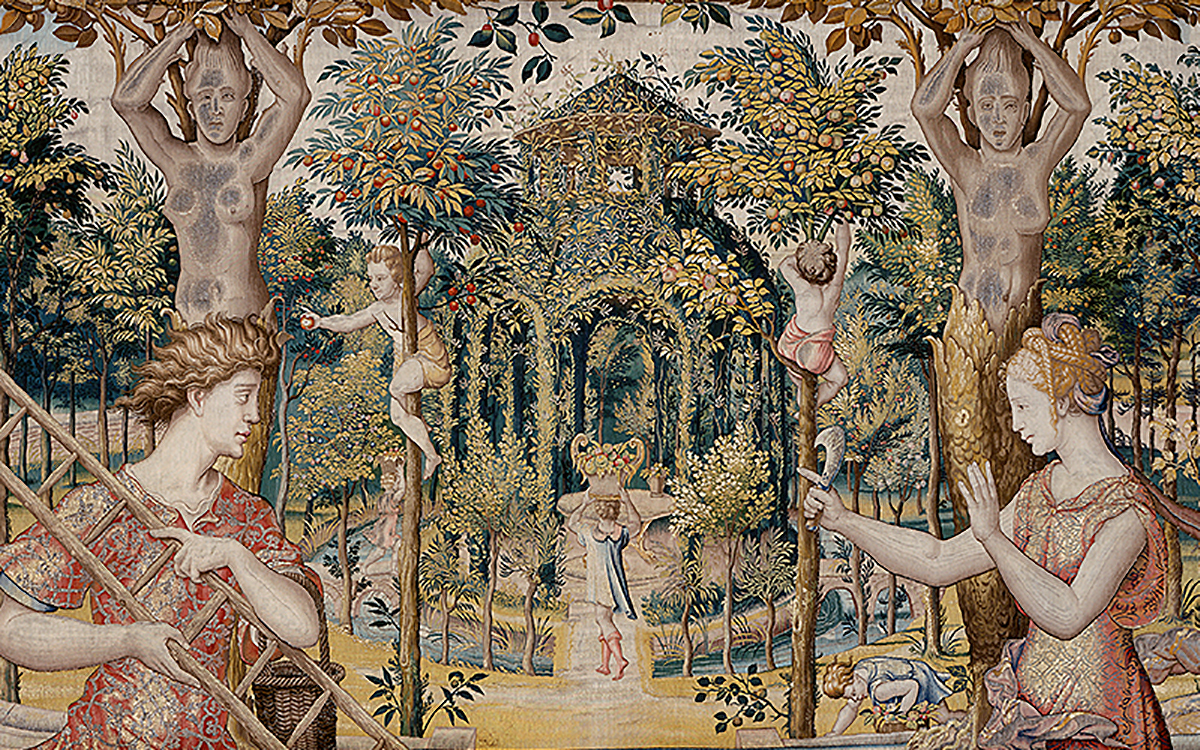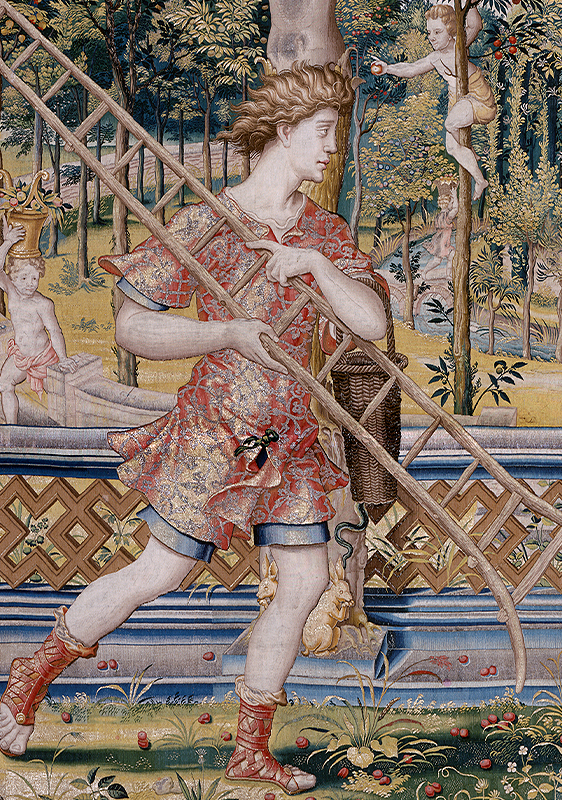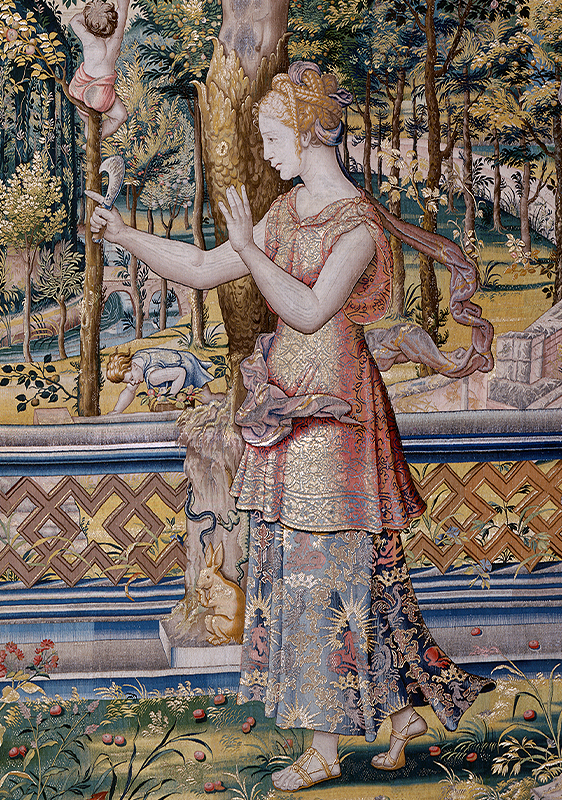Vertumnus and Pomona

Many Renaissance artists drew inspiration from classical mythology in their artwork. The impact of Roman poet Ovid’s work on artistic production during the Renaissance is well known. The story of Vertumnus and Pomona is described in Ovid’s Metamorphoses, in which Vertumnus, god of the seasons, attempts to draw the attention of his beloved, Pomona, goddess of fruit trees and gardens. Vertumnus dons different disguises until he succeeds in wooing her.
In the tapestry on display here, he takes the guise of a fruit picker carrying a ladder and walks towards Pomona, who tries to keep her distance from him, gesticulating. The two figures stand in a lush garden surrounded by caryatids and children climbing the trees and picking fruit. The intense activity in the garden contrasts with the tension between the two main characters as they look at one another.
Pieter Coecke van Aelst admirably transposed this tale onto a tapestry cartoon, creating a new visual language in which panoramic gardens decorated with classical architectural elements create a magical, timeless ambience. These tapestries were very popular during their time, perhaps because of the romance present in this story of the tireless pursuit of love. The artist’s cartoons were used several times to weave new series.


Three types of borders have been identified on the 16th-century tapestries that have survived until the modern day. In this case, the border is a wide strip decorated with cartouches that reflect tastes in Flemish tapestry at the time, with a Latin inscription in the middle. The background of the border features a grid-like decoration with a Moorish-inspired pattern. The edge of the tapestry bears the stamps of Brussels and the tapestry-maker, whose identity remains unknown to this day. However, given the technical quality of the work and the rich materials, the piece is believed to have been made by a first-class master tapestry-maker.
The tapestry on display at the Gulbenkian Museum is the fifth in a series of nine; the other eight are held at Kunsthistorisches Museum in Vienna and previously belonged to the Austrian imperial collection. It was acquired by the collector on 11 February 1938.
Clara Serra
Curator at the Calouste Gulbenkian Museum